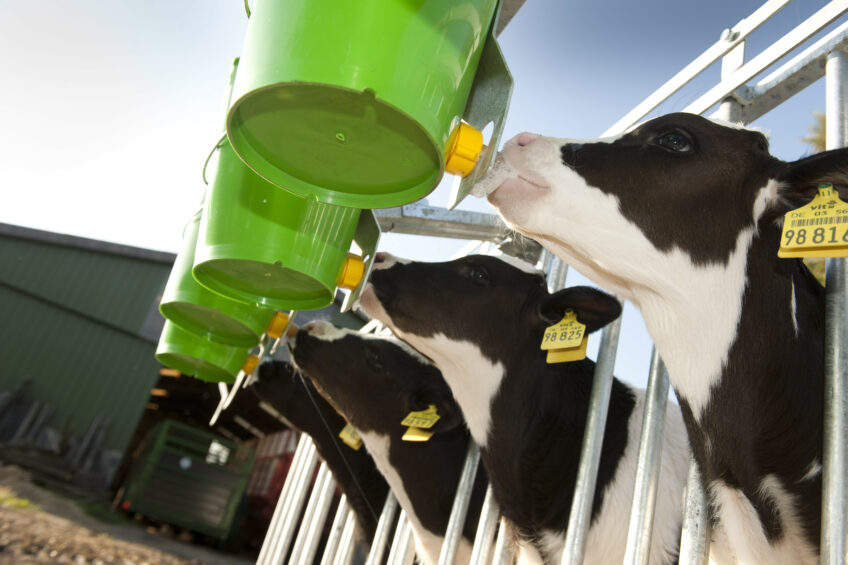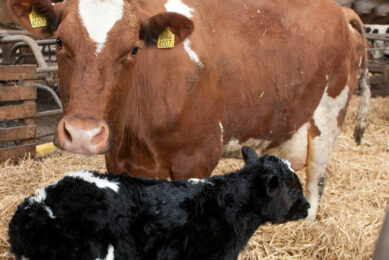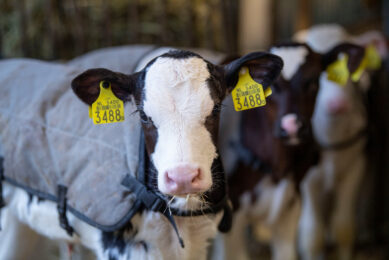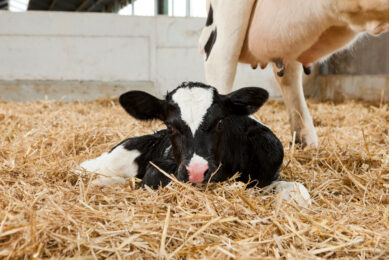5 colostrum misconceptions solved

By now, we know that immunoglobulin-G or IgG is a critical component in bovine colostrum. Some have gone so far as to say IgG is a magical component to protect calves and set them up for a lifetime of success when colostrum is delivered properly.
“The real magic goes beyond IgG itself,” says Dave Cook, PhD., technical calf consultant for US company Milk Products. “Rather it is about achieving successful passive transfer of IgGs, which requires multiple critical steps of proper colostrum collection and delivery.

Here are 5 misconceptions about colostrum delivery:
 Misconception: IgG is the only beneficial ingredient in colostrum
Misconception: IgG is the only beneficial ingredient in colostrum
IgGs are important antibodies which calves absorb into their bloodstreams via maternal colostrum. This absorption can only happen for a short period following birth, which helps protect calves until they develop their immunity several weeks later. “However, colostrum also includes other valuable components which support passive immunity,” says Cook. “Colostrum is a source of several growth and immune modulating compounds factors, including peptide hormones, growth factors, cytokines, steroid hormones and enzymes. The proteins, amino acids, energy, fatty acids, lactose, vitamins and minerals contained in colostrum all are vital to early digestive and immune development.”
 Misconception: Timing of colostrum collection is not important
Misconception: Timing of colostrum collection is not important
Maternal colostrum IgG concentration is highest at calving. But, with every passing hour, IgG concentration decreases due to resorption and milk let-down dilution.
“Researchers at Washington State University conducted a study evaluating IgG levels in colostrum remaining in the dam’s udder at 2, 6, 10 and 14 hours post-calving. They found IgG concentration fell consistently in the hours after calving. By 14 hours, IgG concentration had dropped by approximately one-third,” says Cook. “These results underscore the importance of harvesting colostrum as soon as possible after calving.”
 Misconception: Colostrum administration any time in the first 24 hours is fine
Misconception: Colostrum administration any time in the first 24 hours is fine
“Researchers have also found calves’ ability to absorb IgG in the bloodstream gradually expires as the hours tick by following birth,” says Cook. The Dairy Calf and Heifer Association Gold Standards recommend hand feeding colostrum at 10% of the calf’s bodyweight within the first 2 hours of life.
 Misconception: Older cows and those with the biggest colostrum volume produce the most IgG
Misconception: Older cows and those with the biggest colostrum volume produce the most IgG
“While this assumption seems logical, it appears there is little correlation between dam age, colostrum volume and IgG concentration,” says Cook. “If anything, some researchers suggest a large volume of colostrum may dilute IgG concentration and lower colostrum quality. Every batch of colostrum should be tested with an on-farm tool such as a colostrometer or Brix refractometer to assess quality before feeding.
 Misconception: All colostrum replacers are alike
Misconception: All colostrum replacers are alike
“Colostrum replacers made from bovine colostrum will contain many of the maternal growth and immune factors shown to benefit the new-born calf, which are absent in blood-derived products,” says Cook. “Maternal colostrum replacers and supplements can be a viable option for feeding on day one to achieve passive transfer when quality maternal colostrum is not available. However, blood-based (or plasma) products can be fed to calves for localised gut support post-passive transfer during the critical first 2 to 3 weeks of life.” Sanitation is also a key factor in harvesting and feeding colostrum as high bacteria numbers have been shown to interfere with IgG absorption and can affect the health of the calf. “The more we learn about IgG and the other intricacies of colostrum, the more we are convinced of the absolute importance of getting it into the calf as quickly, cleanly and effectively as possible after birth,” says Cook.
Join 13,000+ subscribers
Subscribe to our newsletter to stay updated about all the need-to-know content in the dairy sector, two times a week.










